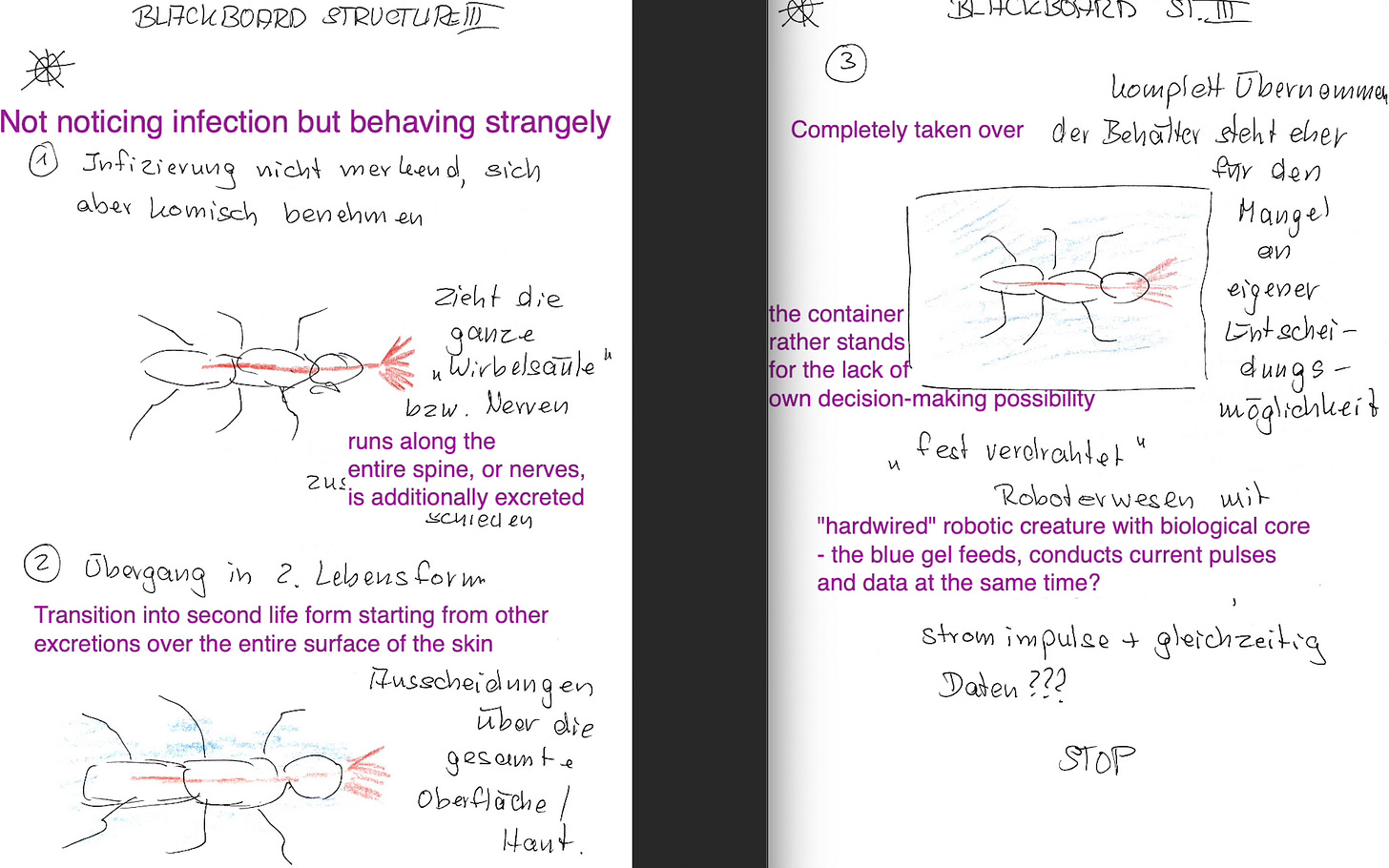After looking through my older remote viewing sessions - I came across this ideogram:
I had completely forgotten - but we have already seen exactly these lines and connections in the blood.
Thin threads connecting individual hydrogel bubbles are visible in the video. When they appear today, they are sometimes even stronger in their connection or now consist of several thread structures.
A connection to fungi is visible from the remote viewing. Let's take this as food for thought and see what else we find...
If these hydrogel-like bubble structures have a hybrid wall structure with fungal components, their stability against external influences could be explained.
Furthermore, fungi are an ideal storage medium for heavy metals.
Spores are a reproduction process of fungi and in the blood we can also determine that the blister structures form various substances. The only question is, why are these bubbles connected to each other? Is this possibly a communication network similar to a mycelial network of large fungi?
And whose fruiting body is the hydrogel bubble?
Fungi consist primarily of roots. We usually only refer to the fruiting body as a mushroom. Should it be similar here in the blood?
The life span of a fungal network (mycelium) is theoretically unlimited. The individual fruiting body, on the other hand, usually disappears after a few days. This corresponds to the observation of hydrogel bubbles with their internal “bubble behavior”. They occur in phases.
Fungal toxins are also membrane-damaging. This would be one possibility as to why the erythrocytes in the blood show increased wall damage and are easier to penetrate by foreign substances.
Another indication of fungal infestation was the following images from the session: the ant is probably more of an analogy, but it gives an indication of how the fungus works and its role within the technology.
Ophiocordyceps unilateralis is a parasitic fungus that grows on ants and manipulates their behavior so that the host has no control over its own body. To summarize - a fungus that has hacked the ant's brain.
Ophiocordyceps unilateralis contains, among other things, some bioactive substances that can be used as potential means of immune modulation.
To date, six bioactive naphthoquinone derivatives have been isolated from this fungus.
This form of fungus cannot infect humans - unless some of its functions have been genetically engineered to improve the nanotechnology we find in the blood.
Data from remote viewing sessions provide images and information that are best understood by the viewer and are not to be taken literally. They show analogies that transmit information from the target of the subconscious to the conscious mind.
Excerpt from: : de Bekker C, Ohm RA, Loreto RG, Sebastian A, Albert I, Merrow M, Brachmann A, Hughes
DP (2015). Gene expression during zombie ant biting behavior reflects the complexity underlying fungal parasitic behavioral manipulation. BMC Genomics. 16:620.
The genome of O. unilateralis was sequenced. A study of the transcriptome of O. unilateralis during the infection of ants showed that genes with different functions are increasingly expressed during the manipulation of the ants' biting behavior. These genes are, for example, genes with homologies to genes for the synthesis of neuromodulators such as ergot alkaloids, other indole and tropane alkaloids, possible mycotoxins, substances similar to bacterial toxins and genes coding for secreted proteins of unknown function.

To summarize, we can say that the remote viewing session and the images from the blood suggest that the hydrogel bubbles act similar to fruiting bodies of fungi and the connection resembles that of a mycelium. It should be clear that this is not a pure fungus. The system comes closest to a hybrid.
But perhaps this information will help.
And here again one of these bubbles with a pronounced reaction activity
For your help and support here on Substack you will also get access to my Future Targets, Extra Targets and the first blueprint for the LaserCube on my website.
I have set up a Telegram channel - where I post new images from darkfield microscopy. If you would like to browse through new pictures in between, you are welcome to register.
SAM’s Substack is a reader-supported publication. To receive new posts and support my work, consider becoming a free or paid subscriber.
Subscribed
Bitcoin QR-Code









